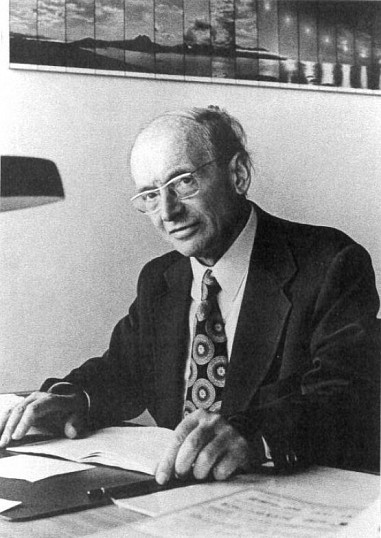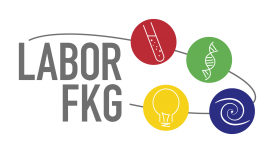Hans Haffner wurde am 8. November 1912 als drittes von fünf Kindern des Pfarrers Christian Haffner und seiner Frau Gertrud in Nördlingen geboren. Nach seiner Gymnasialzeit in Lindau und Regensburg studierte er ab 1931 an der Universität München, bevor er 1933 an die Universität Göttingen wechselte.
1934 begann Haffner an der Universität Göttingen mit der Arbeit an seiner Dissertation, die die fotografische Fotometrie des offenen Sternhaufens Praesepe zum Thema hatte. Von dieser „Himmelskrippe“ M41 wertete er Fotoplatten aus dem blauen Bereich des Lichtspektrums aus. Durch diese Arbeit lernte er Otto Heckmann kennen, der den roten Spektralbereich desselben Objekts untersuchte. Beide Wissenschaftler erreichten bei ihrer Arbeit eine beachtenswerte Genauigkeit, die erst Jahrzehnte später wieder durch fotoelektrische Methoden erreicht wurde.
Mit Beginn des 2. Weltkriegs wurde Haffner eingezogen. Der Leiter der Münchner Sternwarte Karl-Otto Kiepenheuer konnte aber erreichen, dass Haffner zur Sonnenüberwachung an das neu gegründete Wendelstein-Observatorium abkommandiert wurde, wo Haffner in den nächsten fünf Jahren den Aufbau dieser Einrichtung leitete.
Nach dem Krieg kehrte er an das Astronomische Institut der Universität Göttingen zurück und nahm die fotometrische Untersuchung verschiedener Sternhaufen wieder auf. 1953 wurde er zum Professor für Astronomie an die Universität Hamburg berufen. Dort arbeitete er wieder mit Otto Heckmann zusammen, der während des Kriegs Direktor der dortigen Universitätssternwarte Hamburg-Bergedorf geworden war.
Von 1955 bis 1959 war Hans Haffner mit einer wenige Monate dauernden Unterbrechung 1956/57 Superintendent am Boyden Observatorium in Bloemfontein, Südafrika. Dort fertigte er fotometrische Aufnahmen von Sternhaufen an und erstellte Atlanten des Südhimmels mit Blau- und Infrarotaufnahmen sowie der südlichen Milchstraße. Nach seiner Rückkehr an die Sternwarte Hamburg-Bergedorf übernahm er ab 1960 den Vorsitz der Astronomischen Gesellschaft.
Als Otto Heckmann 1962 Direktor der neu gegründeten Europäischen Südsternwarte ESO wurde, übernahm Haffner für ihn kommissarisch die Leitung der Universitätssternwarte Hamburg-Bergedorf bis 1967.
In diesen Jahren beschäftigte er sich wissenschaftlich vor allem mit der Mondoberfläche und gab zusammen mit Albert Eisenhut einen Bilderatlas des Himmels heraus. 1967 erhielt Hans Haffner einen Ruf auf den neu eingerichteten Lehrstuhl für Astronomie der Universität in Würzburg. Voller Tatendrang baute er den Lehrstuhl auf und modernisierte die Universitätssternwarte an der Keesburg.
Um den Jahreswechsel 1971/72 war er zusammen mit Otto Heckmann in La Silla in Chile, um ein neues Teleskop der ESO in Betrieb zu nehmen. Im Anschluss reiste er nochmals für einen Forschungsaufenthalt nach Bloemfontein.
Durch einen Hirntumor verlor er 1973 seine Sehkraft, die er aber nach einer operativen Entfernung des Tumors wieder erlangen konnte. Die Operation erbrachte aber keine dauerhafte Genesung. Nachdem er Ende 1976 erneute erblindete, erlag Hans Haffner am 23. Februar 1977 seinem Krebsleiden.



